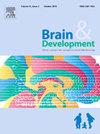Effects of foot intrinsic muscle dynamic stretching intervention on static balance, gait parameters and gross motor ability with hemiplegic cerebral palsy: a randomized controlled pilot study
IF 1.3
4区 医学
Q4 CLINICAL NEUROLOGY
引用次数: 0
Abstract
Background
The foot intrinsic muscle dynamic stretching (FIMDS) intervention can increase ankle stability, stabilize the foot arch, and induce an increase in gross motor ability.
Objectives
The objective of this study is to compare the effects of a 6-week program of FIMDS with those of a slant board (SB) on static balance with open and closed eyes, gait parameters (gait speed, cadence), and gross motor ability in children with cerebral palsy (CP).
Methods
Participants were randomized into either the FIMDS (n = 7) or SB (n = 7) group. Patients in both groups underwent standard physiotherapy for 30 min per session. Additionally, FIMDS and SB interventions were performed in 3 sets of 10 repetitions, 3 times a week for 6 weeks. Static balance (with open and closed eyes), gait speed, cadence, and gross motor ability were measured after the 6 weeks of training.
Results
After 6 weeks of training, both the FIMDS and SB groups showed significant improvement in all outcome measures compared to baseline (p < .05). Furthermore, the FIMDS group demonstrated greater improvement in open eyes static balance, gait speed, cadence, and gross motor ability while standing compared to the SB group (p < .05).
Conclusions
This study demonstrated that FIMDS training, combined with standard physiotherapy, improved open eyes static balance, gait speed, cadence, and gross motor ability while standing in children with hemiplegic CP.
足部内在肌肉动态拉伸干预对偏瘫脑瘫患者静态平衡、步态参数和大运动能力的影响:一项随机对照先导研究
脚部内在肌肉动态拉伸(FIMDS)干预可以增加踝关节稳定性,稳定足弓,并诱导大运动能力的增加。本研究的目的是比较为期6周的FIMDS和斜板(SB)对脑瘫(CP)儿童睁眼和闭眼静态平衡、步态参数(步态速度、节奏)和大运动能力的影响。方法随机分为FIMDS组(n = 7)和SB组(n = 7)。两组患者均接受标准物理治疗,每次30分钟。此外,FIMDS和SB干预分为3组,每组10次重复,每周3次,持续6周。6周训练后测量静态平衡(睁眼和闭眼)、步态速度、节奏和大运动能力。结果:经过6周的训练,FIMDS组和SB组与基线相比,所有结果指标均有显著改善(p <;. 05)。此外,与SB组相比,FIMDS组在睁眼静态平衡、步态速度、节奏和站立时的大运动能力方面表现出更大的改善(p <;. 05)。结论:本研究表明,FIMDS训练与标准物理治疗相结合,可改善偏瘫CP患儿站立时的睁眼静态平衡、步态速度、节奏和大运动能力。
本文章由计算机程序翻译,如有差异,请以英文原文为准。
求助全文
约1分钟内获得全文
求助全文
来源期刊

Brain & Development
医学-临床神经学
CiteScore
3.60
自引率
0.00%
发文量
153
审稿时长
50 days
期刊介绍:
Brain and Development (ISSN 0387-7604) is the Official Journal of the Japanese Society of Child Neurology, and is aimed to promote clinical child neurology and developmental neuroscience.
The journal is devoted to publishing Review Articles, Full Length Original Papers, Case Reports and Letters to the Editor in the field of Child Neurology and related sciences. Proceedings of meetings, and professional announcements will be published at the Editor''s discretion. Letters concerning articles published in Brain and Development and other relevant issues are also welcome.
 求助内容:
求助内容: 应助结果提醒方式:
应助结果提醒方式:


